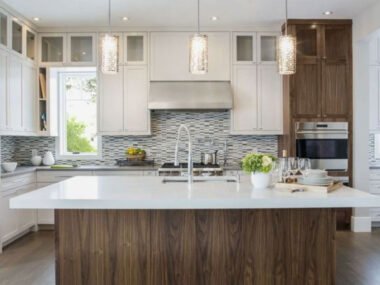Designing your home interior might resemble creating a masterpiece. It is not just choosing the furniture and color schemes; it is about combining creative skills and imagination to personalize your home space. From selecting the right furniture to incorporating plant corners and embracing colors that speak to your style, every decision is an opportunity to showcase your personal touch. In this article, we’ll break down the artistic skills needed to curate an extraordinary interior, with 7 key activities to consider along the way.
Scheduling the Layout
One of the most significant things to learn when you’re planning your home is how to lay out and schedule the space. Whether you’re installing beds, chairs, or accent pieces, balance is a must. Think of how you want individuals to move through the space. Don’t pack rooms full of furniture, but instead create paths that make the space open and inviting.
Begin by measuring your space precisely, then experiment with various furniture arrangements to discover what feels most natural. Try out the positioning of large pieces of furniture (such as your bed or sofa) before settling. And don’t forget, there’s no single solution that suits all—what fits in a small apartment won’t necessarily fit in a large living room.
Creating a Comforting Corner for Flowers
Creating a plant corner of comfort will be able to change the ambiance of your home into something calm and rejuvenating. When putting plants near the window or designing a special garden corner, selecting the correct location is essential for your plants’ growth—and your room’s look. Start off by selecting a corner where there is ample natural light. You can then proceed to choose plants that are compatible with the lighting conditions of the space. Position your plants cautiously by blending their texture and size to create an effortless, balanced look. Add personal touches like special planters or decorative rocks to make your corner more inviting. A well-styled plant corner not only makes your space beautiful but also contributes to a healthier indoor space.
Painting Creativity and Art
Color plays a significant role in setting the mood of a room in home interior design. A simple coat of paint can completely transform a space, turning a dull room into a vibrant, welcoming haven. Your creative approach to color selection and application determines whether the atmosphere will be warm, expansive, calming, or energizing. For instance, neutral shades work beautifully in living rooms, especially when paired with contrasting colors like bright orange or warm terracotta. Neutral tones provide a harmonious backdrop, allowing bold accents to take center stage. To complement orange without overwhelming the space, consider using colors like pale gray, white, and beige. These subtle hues create a calming environment while highlighting the warmth of orange, resulting in a balanced and inviting ambiance. Neutral colors that go with orange create a perfect combination, offering a gentle backdrop that highlights the bold, vibrant tone of orange.
Choosing the Perfect Fabrics
Texture adds depth and richness to any room, hence the selection of furniture and decors fabrics is very important. Upholstery, drapes, and pillows—each one of these elements should harmonize to provide a similar texture. Begin with heavier materials such as velvet or linen for larger items such as sofas or armchairs, and then finish with lighter materials such as cotton or sheer fabric for curtains. Don’t forget the influence of accessories such as throws and pillows; they can immediately raise the comfort level of your space and add interesting textures to enhance your overall theme.
Illuminating Your Space with Purpose
Lighting is quite possibly the most imaginative way of contributing to your home’s beauty. Think of it as the brushstroke that completes your artwork. What makes great lighting is understanding its role in different rooms—whether that’s creating ambiance for your living room or providing light to your kitchen. Experiment with a combination of ambient, task, and accent lighting to create depth and layering in your space. For instance, a chandelier or pendant light can be the center of attention in a dining room, whereas floor lamps or table lamps give warm accents to your living room. Don’t forget natural light; large windows and glass doors can make a room feel expansive and airy.
Adding Art and Personal Touches
Art brings personality and uniqueness to your space. From paintings and sculptures to photographs and wall art, thoughtfully chosen pieces of art can transform a room from bland to amazing. When selecting artwork for your walls, consider the color scheme and theme of your room. If your living room has a minimalist theme and neutral tones, a large, bold artwork can be the room’s centerpiece. If your room is more eclectic, mix different styles and media to reflect your personality.
Don’t overlook that art takes the form not only of the canvas and frame kind. Sculpture, antiques, and even handmade do-it-yourself knickknacks can add flavor and personality to your place and make it specially yours.
Furniture Planning to Define Function Spaces
Good interior design includes room to make multiple function areas in one space. In the case of the open-plan residence, separating room space into area for lounging, eating, and working often can be hard to plan. Consider how you can utilize every nook and corner of space within a room. Place your couch in the center to establish an area to lounge, and place your table closer to your kitchen or a nook set apart. In the event you need a home office, place it in the corner or far from distractions within your own secluded zone. Through organizing these areas to function using furnishings, you’ll maximize utilization and flow through of your living areas.
Adding Natural Elements
Natural materials like wood, stone, and metal have a timeless beauty that can make your house feel grounded and earthy. These materials add texture, warmth, and character, from reclaimed wood furniture to stone countertops to metal lighting. If you want to add more greenery to your home but have no room for a whole garden corner, experiment with wooden shelves to display small plants or hanging planters to bring nature into your living room. Natural materials are versatile and can be integrated with any decor style—from country to modern.
Conclusion
By following these artistic skills and activities, you’ll have the tools to create a home that’s a reflection of your personal style. Each step, from planning the layout to adding creative accents and artistic elements, comes together to craft a space that is not only functional but also visually stunning. With a little patience and attention to detail, your dream home interior is within reach.










